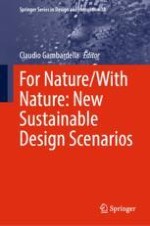2024 | OriginalPaper | Buchkapitel
New Scenarios for Sustainable Design Toward an Integrated Approach Between Bio-Inspired Design, Biomimetic Materials, Generative Parametric Modelling, Additive Manufacturing
verfasst von : Lucia Pietroni, Jacopo Mascitti, Davide Paciotti, Alessandro Di Stefano
Erschienen in: For Nature/With Nature: New Sustainable Design Scenarios
Verlag: Springer Nature Switzerland
Aktivieren Sie unsere intelligente Suche, um passende Fachinhalte oder Patente zu finden.
Wählen Sie Textabschnitte aus um mit Künstlicher Intelligenz passenden Patente zu finden. powered by
Markieren Sie Textabschnitte, um KI-gestützt weitere passende Inhalte zu finden. powered by
